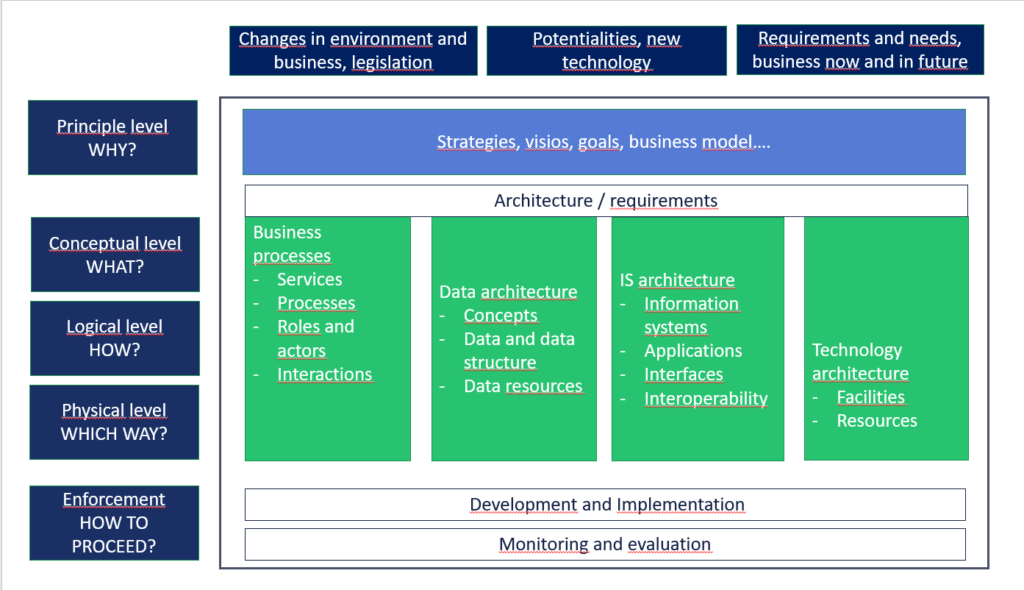A business process is a series of steps or tasks perfomed by a group of stakeholders to achieve a concrete goal. Each step in a business process donotes a task that is assigned to a participant.
Processes are something that business go through every day in order to accomplish their mission. The better their processes are, the more effective the business is. Some businesses see their processes as a strategy for achieving competitive advantage.h
Key reasons to have well-defined business processes
Figure: Framework for business analysis

The general steps for the business process lifecycle are:
1. Define your goals: What is the purpose of the process? Why was it created? How will you know if it is successful?
2. Plan and map your processes: What are the strategies needed to achieve the goals? This is the broad roadmap for the process.
3. Set actions and assign stakeholders: Identify the individual tasks your teams and machines need to do in order to execute the plan.
4. Test the process: Run the process on a small scale to see how it performs. Observe any gaps and make adjustments.
5. Implement the process: Start running the process in a live environment. Properly communicate and train all stakeholders.
6. Monitor the results: Review the process and analyze its patterns. Document the process history.
7. Repeat: If the process is able to achieve the goals set for it, replicate it for future processes.


| Cookie | Duration | Description |
|---|---|---|
| cookielawinfo-checkbox-analytics | 11 months | This cookie is set by GDPR Cookie Consent plugin. The cookie is used to store the user consent for the cookies in the category "Analytics". |
| cookielawinfo-checkbox-functional | 11 months | The cookie is set by GDPR cookie consent to record the user consent for the cookies in the category "Functional". |
| cookielawinfo-checkbox-necessary | 11 months | This cookie is set by GDPR Cookie Consent plugin. The cookies is used to store the user consent for the cookies in the category "Necessary". |
| cookielawinfo-checkbox-others | 11 months | This cookie is set by GDPR Cookie Consent plugin. The cookie is used to store the user consent for the cookies in the category "Other. |
| cookielawinfo-checkbox-performance | 11 months | This cookie is set by GDPR Cookie Consent plugin. The cookie is used to store the user consent for the cookies in the category "Performance". |
| viewed_cookie_policy | 11 months | The cookie is set by the GDPR Cookie Consent plugin and is used to store whether or not user has consented to the use of cookies. It does not store any personal data. |